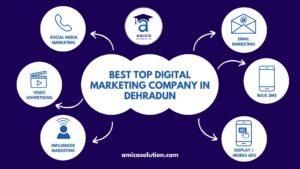
8 Bad SEO Practices: Common Mistakes and How to Avoid Them for Better Rankings
“Google only loves you when everyone else loves you first.” – Wendy Piersall.
Think about it—your website won’t rank well unless it genuinely serves your audience. Yet, many fall into the trap of bad SEO practices, hoping for quick wins. The irony? These shortcuts often lead to penalties that are tough to recover from. In this blog, we’ll explore what bad SEO practices are, why they’re tempting, and most importantly, how to avoid them to achieve long-lasting success in search rankings.
Whether you’re a newbie or a pro, knowing what not to do is just as crucial as knowing what to do. So, let’s dive in.
What Are Bad SEO Practices?
Bad SEO practices—also known as Black Hat SEO—are shady tactics designed to manipulate search engines rather than provide real value to users. Bad SEO practices can range from stuffing keywords where they don’t belong to creating spammy backlinks or hiding text in the background. They might give you a temporary high, but ultimately, they’re the fast lane to SEO disaster. Think of them as sugar rushes – sweet for a moment, but a brutal crash is inevitable.
The short-term benefits come at a heavy price. Search engines are smart, and they’re getting smarter every day. Sooner or later, they’ll catch on to your tricks and slap your website with a penalty. Imagine losing your hard-earned traffic overnight—yeah, it’s as painful as it sounds.
Why Are They So Appealing (and So Dangerous)?
The temptation to use bad SEO practices is real. After all, who doesn’t want to shoot to the top of search results instantly? These tactics promise:
- Quick results
- Immediate traffic boosts
- Low effort
But here’s the catch – Google’s algorithms are constantly evolving. What might work today could get flagged tomorrow. Once search engines identify you’re using bad SEO practices, they’ll slam your site down the rankings faster than you can recover. In short, these short-term gains often lead to long-term pain.
8 Common Bad SEO Practices to Avoid
Let’s break down the most notorious bad SEO practices you need to steer clear of:
Keyword Stuffing
Ever read a blog post that repeats the same phrase over and over? That’s keyword stuffing. Not only is it annoying, but search engines hate it too. Instead of boosting your rankings, it damages your user experience and credibility. For example:
“Looking for the best pizza in town? Our pizza place offers the best pizza in town because the best pizza in town is what you want.”
Google hates this. Instead, focus on natural keyword placement that flows with your content.
Plagiarized Content
Copying content from other sites is a big no-no. Search engines reward originality, and duplicate content can tank your rankings. Always create unique, valuable content. If you must reference another source, give proper credit and add your own insights.
Buying Links
Paying for backlinks might seem like a fast track to authority, but search engines are wise to these schemes. Google wants to see quality, organic backlinks from reputable sites. Purchased links often come from spammy sites that can hurt your credibility.
Cloaking
Showing different content to search engines than what users see is deceptive. It might fool the algorithm briefly, but once discovered, your site will face severe penalties. Transparency is the way to go.
Hidden Text
Some webmasters try to hide keywords by making them the same color as the background. It’s an old-school trick that Google can now detect easily. If you’re caught, expect penalties.
Clickbait Titles
You know those articles that promise to “blow your mind,” but deliver nothing but disappointment? Clickbait titles attract users initially, but if your content doesn’t deliver, your bounce rate will skyrocket – and so will Google’s suspicion.
Ignoring Mobile Optimization
With over 60% of searches coming from mobile devices, a site that isn’t mobile-friendly is shooting itself in the foot. Slow load times, awkward layouts—these are user-repellent. Optimize for mobile to keep both users and search engines happy.
Neglecting Metadata
Skipping out on meta titles, descriptions, and alt text is like baking a cake and forgetting the frosting. These small details help search engines understand your content and attract users to click.
The Impact of Bad SEO Practices
So, what happens when you engage in bad SEO practices? Here’s the harsh reality:
- Plummeting Rankings
Search engines penalize sites using shady tactics, causing your hard-earned rankings to crash. Recovering from a penalty is like climbing out of quicksand—it’s exhausting and slow.
- Loss of Trust
Visitors can sense when a site is trying too hard to game the system. Whether it’s overused keywords or irrelevant links, trust erodes, and users are less likely to return.
- Wasted Resources
All that time and money spent on bad SEO could’ve been invested in ethical, long-term strategies. Shortcuts often lead to dead-ends. - Deindexing
In extreme cases, search engines can remove your site entirely from their index. Imagine your website not showing up on Google at all. Nightmare fuel, right?
Side note: SEO isn’t just about rankings; it’s about building a lasting reputation. Play the long game.
How to Avoid Bad SEO Practices
Alright, so how do you stay on the right path? Here are some foolproof strategies:
Create Quality Content
Focus on solving problems, answering questions, or providing value. If your content genuinely helps people, search engines will reward you.
Use Keywords Naturally
Instead of cramming keywords, sprinkle them organically. Write like you’re talking to a friend, not a robot.
Earn Backlinks Authentically
Build relationships, collaborate, and create share-worthy content. The best backlinks are the ones you earn, not buy.
Be Transparent
Don’t hide or mislead. Your content should be exactly what users and search engines expect it to be.
Prioritize User Experience
Fast load times, intuitive design, and mobile-friendliness should be non-negotiable. Happy users = happy search engines.
Stay Updated
SEO best practices evolve. Follow trusted sources like Google’s Webmaster Blog or industry experts to keep up with changes.
Conclusion
Bad SEO practices might promise a quick fix, but they’re a ticking time bomb. By avoiding these common mistakes and focusing on sustainable, user-first strategies, you’ll set your site up for long-term success.
The next time you think about cutting corners, ask yourself—what kind of legacy do you want to leave online? Stay ethical, stay informed, and most importantly, stay ranked. Ready to make the shift?
You May Also Like:-
- Best SEO Company in Dehradun Amica Solutions
- Best YouTube Management Company in India: “Amica Solution”
- 10 Reasons Why Long Tail Keywords Are Better
FAQ: Bad SEO Practices – Common Mistakes and How to Avoid Them
Bad SEO practices refer to unethical or manipulative tactics used to trick search engines into ranking a website higher. These include techniques like keyword stuffing, plagiarized content, cloaking, and buying backlinks. These strategies may provide short-term results but often lead to penalties and long-term damage.
Many people use bad SEO practices because they seem to offer quick results. However, these methods are shortcuts that often lead to temporary gains. In the long run, search engines catch on and penalize such tactics, leading to lost traffic, lower rankings, or even deindexing.
Keyword stuffing is the practice of overloading a webpage with keywords in an unnatural way to manipulate search rankings. It’s harmful because it ruins the user experience, makes content hard to read, and violates search engine guidelines, which can result in penalties.
Plagiarized content can hurt your SEO because search engines prioritize original content. If your content is copied from another source, your website may be penalized or pushed down in search rankings. Creating unique content is essential for improving visibility.
Link schemes involve buying, selling, or exchanging links to manipulate search engine rankings. These include paid backlinks, link exchanges, and participation in private blog networks (PBNs). Search engines like Google actively penalize such practices, damaging your site’s credibility.
Cloaking is when a website shows different content to search engines than it shows to users. This deceptive practice is used to trick search engines into ranking a site higher. If discovered, cloaking can lead to severe penalties or deindexing.
Bad SEO practices can lead to search engine penalties, lower rankings, and even complete removal from search results. They also hurt user experience, damage trust, and waste time and resources that could be spent on ethical SEO strategies.
Check for signs like:
Overuse of keywords (keyword stuffing)
Duplicate or plagiarized content
Spammy backlinks or sudden increases in low-quality links
Slow mobile performance
Hidden text or cloaking
Using tools like Google Search Console can also help identify SEO issues.
To avoid bad SEO practices:
Focus on creating quality, user-centric content.
Use keywords naturally and avoid overstuffing.
Earn backlinks through authentic outreach and collaboration.
Prioritize website speed, mobile-friendliness, and user experience.
Stay updated on SEO best practices through credible sources.
If your site has been penalized:
- Identify the cause of the penalty (check Google Search Console for notifications).
- Remove or fix the offending content or practices.
- Submit a reconsideration request to Google if it’s a manual penalty.
- Focus on ethical SEO practices to rebuild your site’s authority.
Yes, Tools like Google Search Console, Ahrefs, SEMrush, and Yoast SEO can help you monitor your site, identify issues, and ensure you’re following good SEO practices.
Recovery time varies based on the severity of the penalty and the steps taken to correct the issues. It can take anywhere from a few weeks to several months. Consistently applying ethical SEO practices is key to regaining and maintaining rankings.

Best Top Digital Marketing Company in Dehradun
Best Top Digital Marketing Company in Dehradun The Search for a Premier Digital Marketing Service in Dehradun: Why It Matters Dehradun isn’t just about hills,

What Is Off-Page SEO and Why Is It Important? (Beginner’s Guide to Building Authority & Rankings)
What Is Off-Page SEO and Why Is It Important? (Beginner’s Guide to Building Authority & Rankings) Here’s a wild one: According to Moz, backlinks are

How Digital Marketing Helps Local Businesses Grow: Strategies That Work in 2025
How Digital Marketing Helps Local Businesses Grow: Strategies That Work in 2025 Let’s be honest—running a local business today is a whole different compared to

SEO vs. Google Ads: What’s the Better Long-Term Strategy?
SEO vs. Google Ads: What’s the Better Long-Term Strategy? You’ve probably heard this debate a hundred times already: SEO vs. Google Ads—which one actually works

Best SEO Practice for 2025: Future-Proof Strategies to Boost Your Rankings
Best SEO Practice for 2025: Future-Proof Strategies to Boost Your Rankings Let’s be honest — SEO isn’t what it used to be. If you’re still

Top Social Media Statistics Every Marketer Should Know in 2025
Top Social Media Statistics Every Marketer Should Know in 2025 Social media has become an indispensable pillar of modern marketing. Its vast reach and ability

